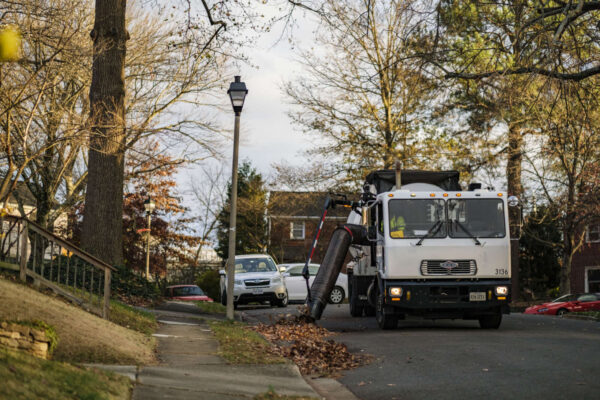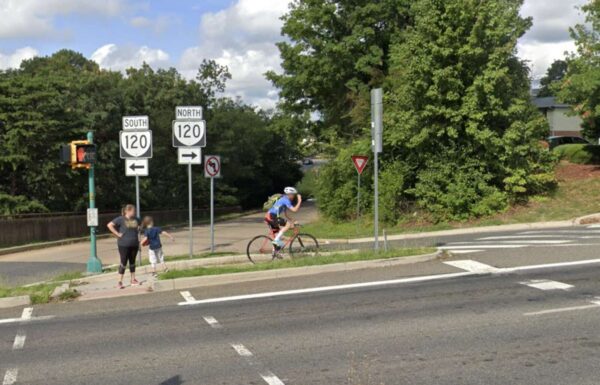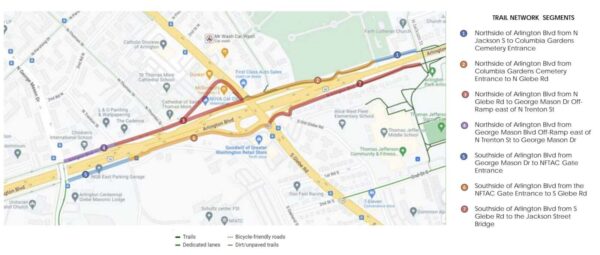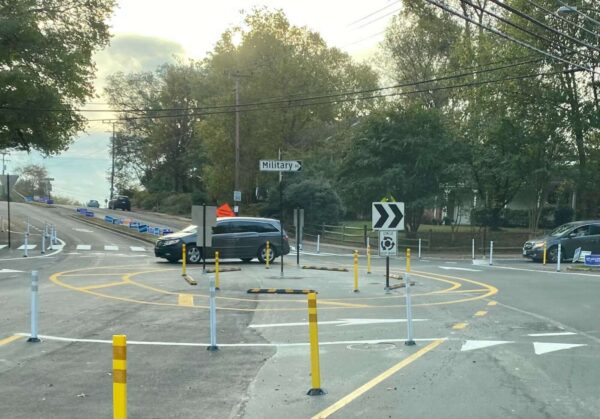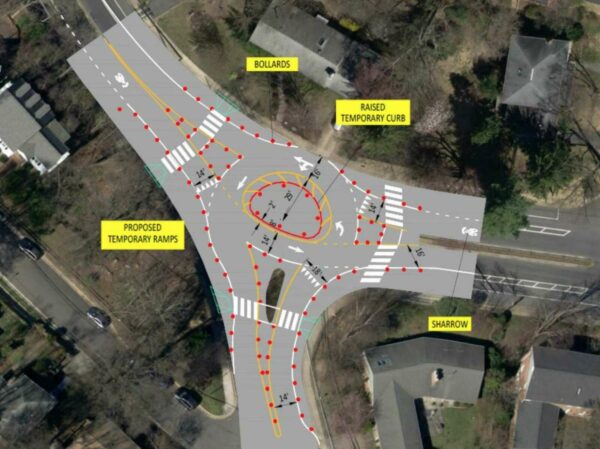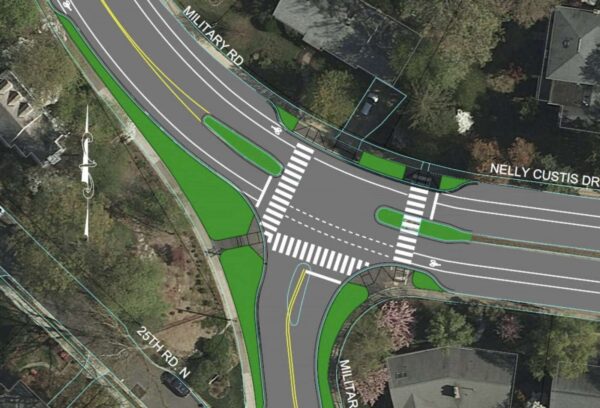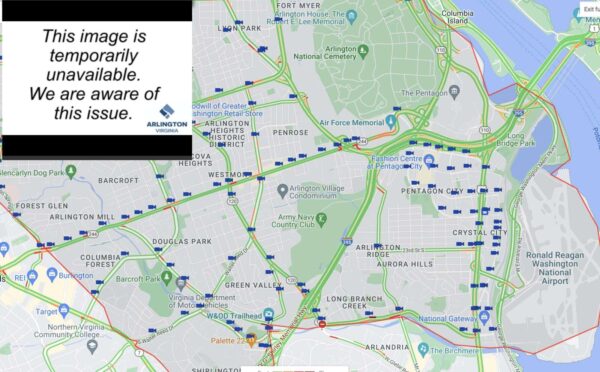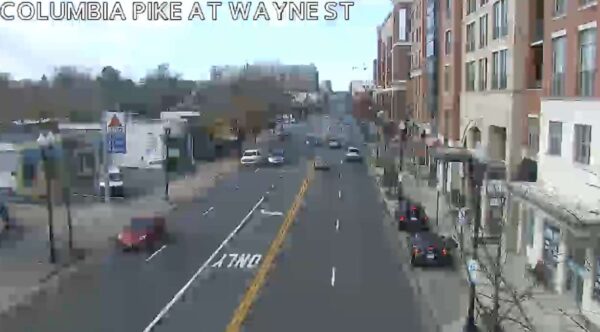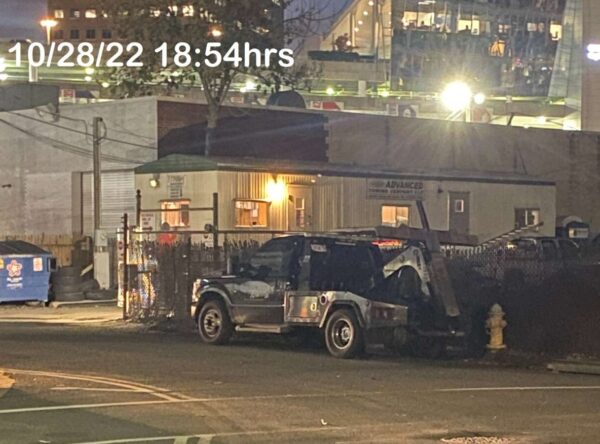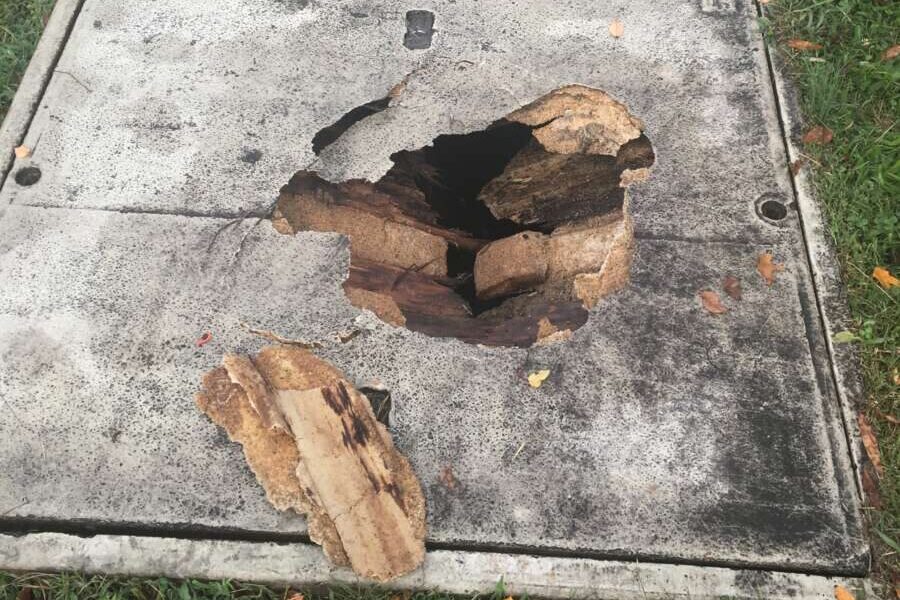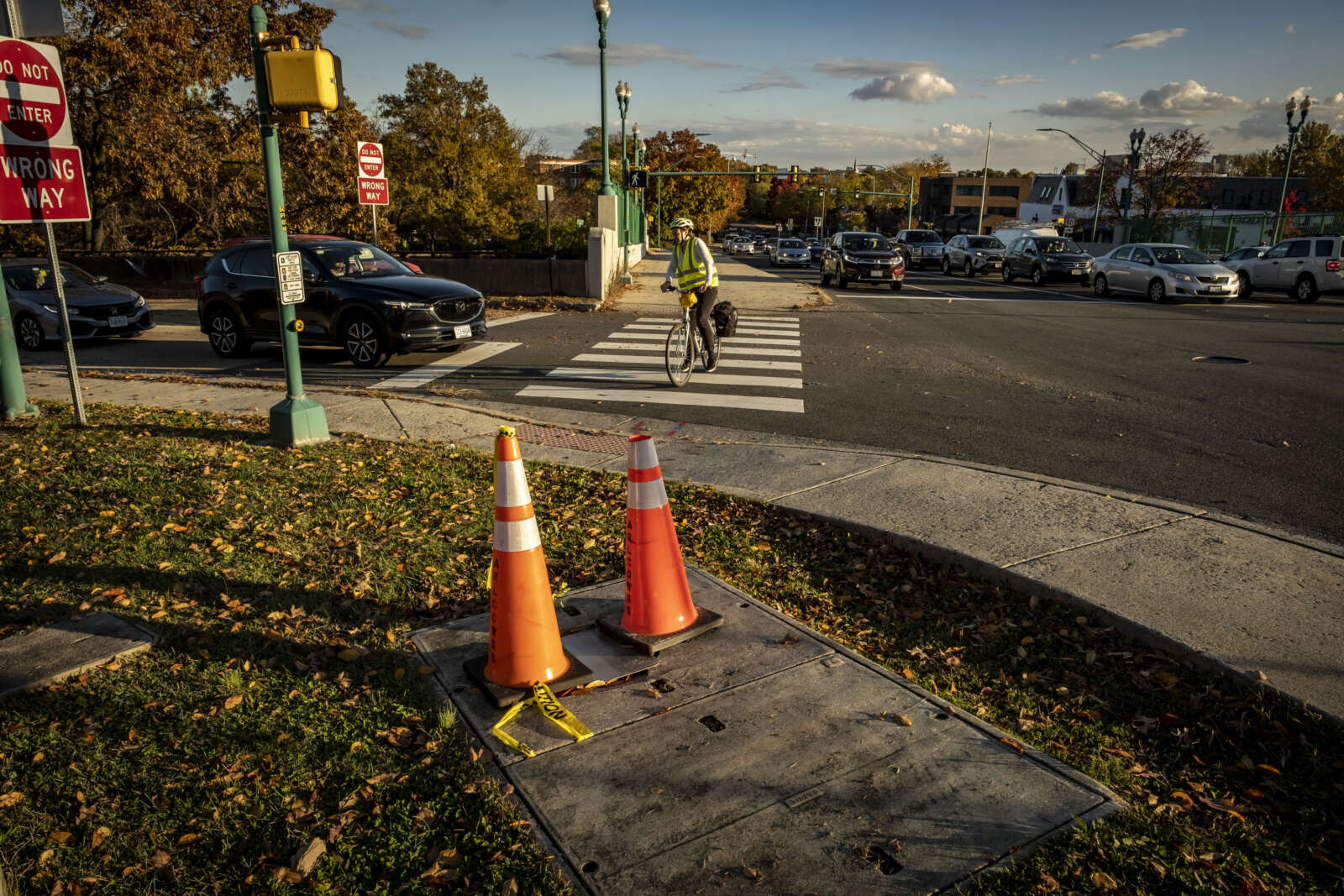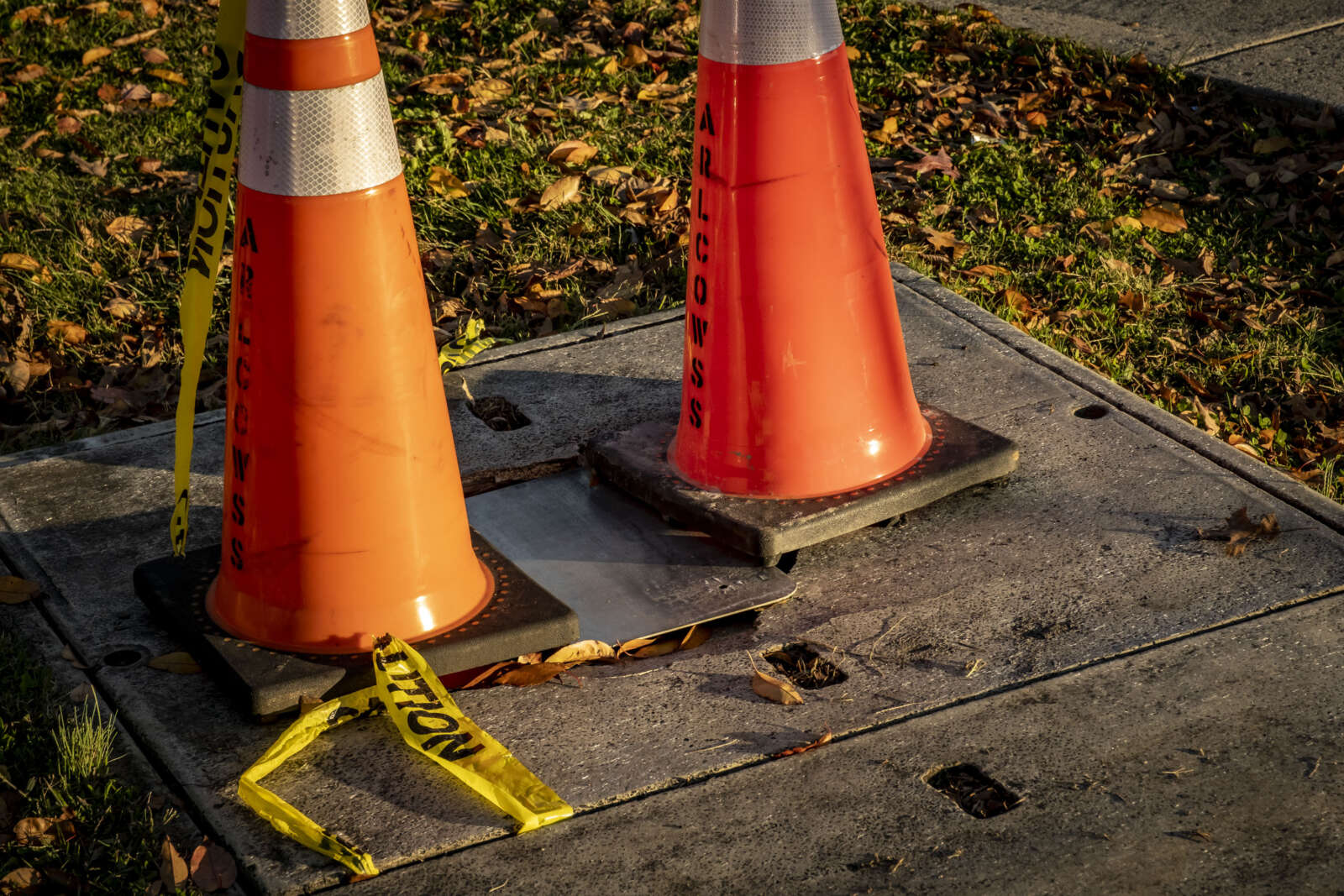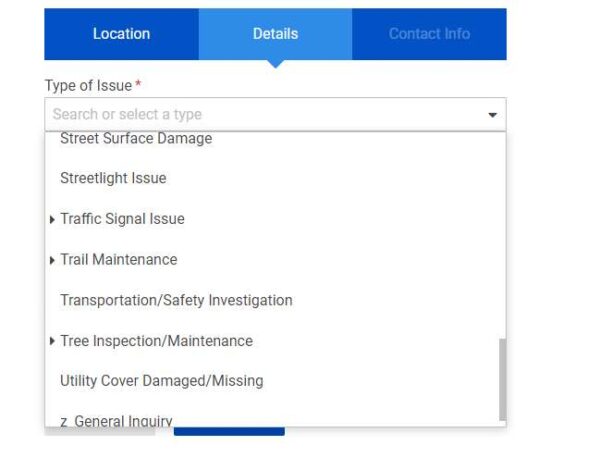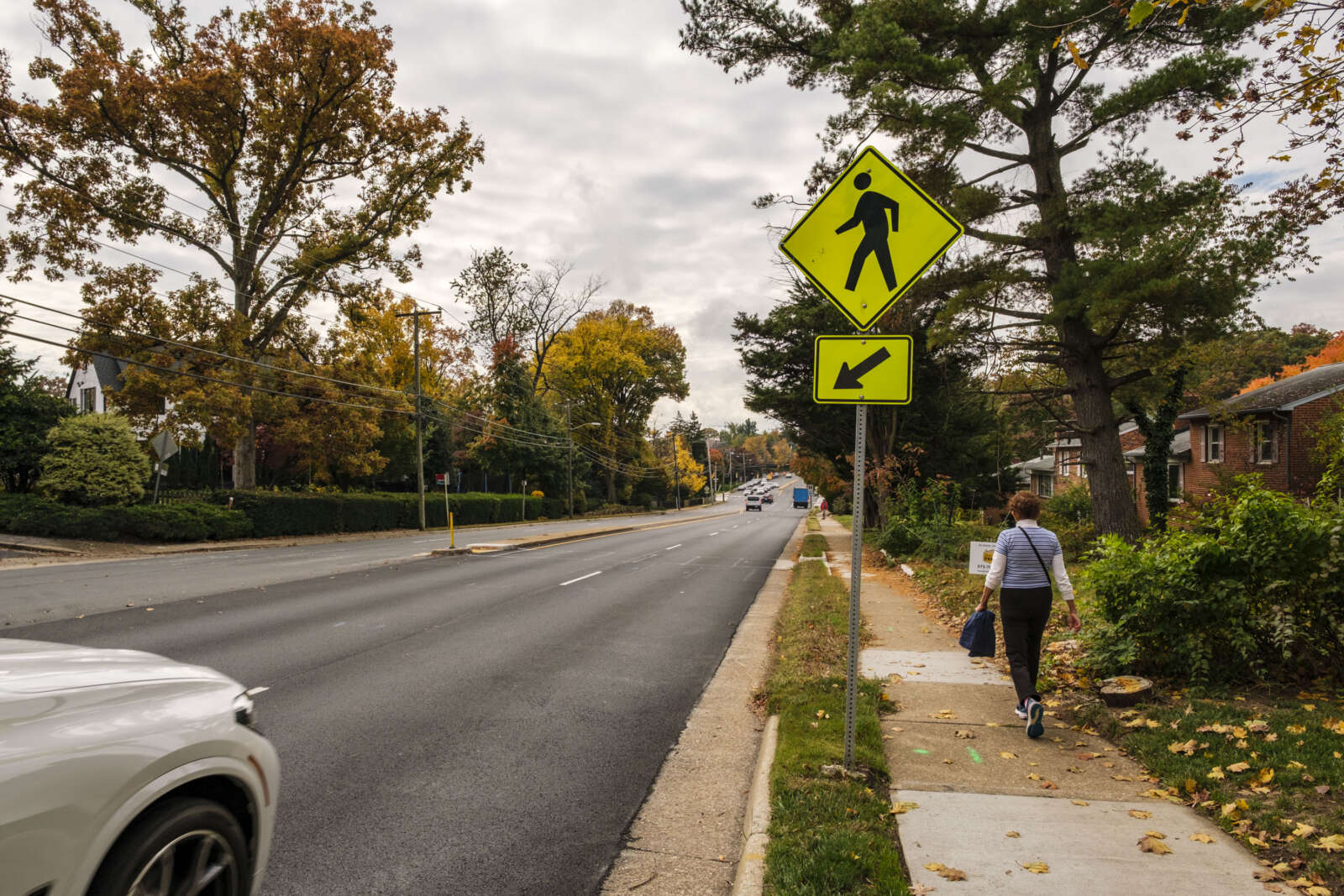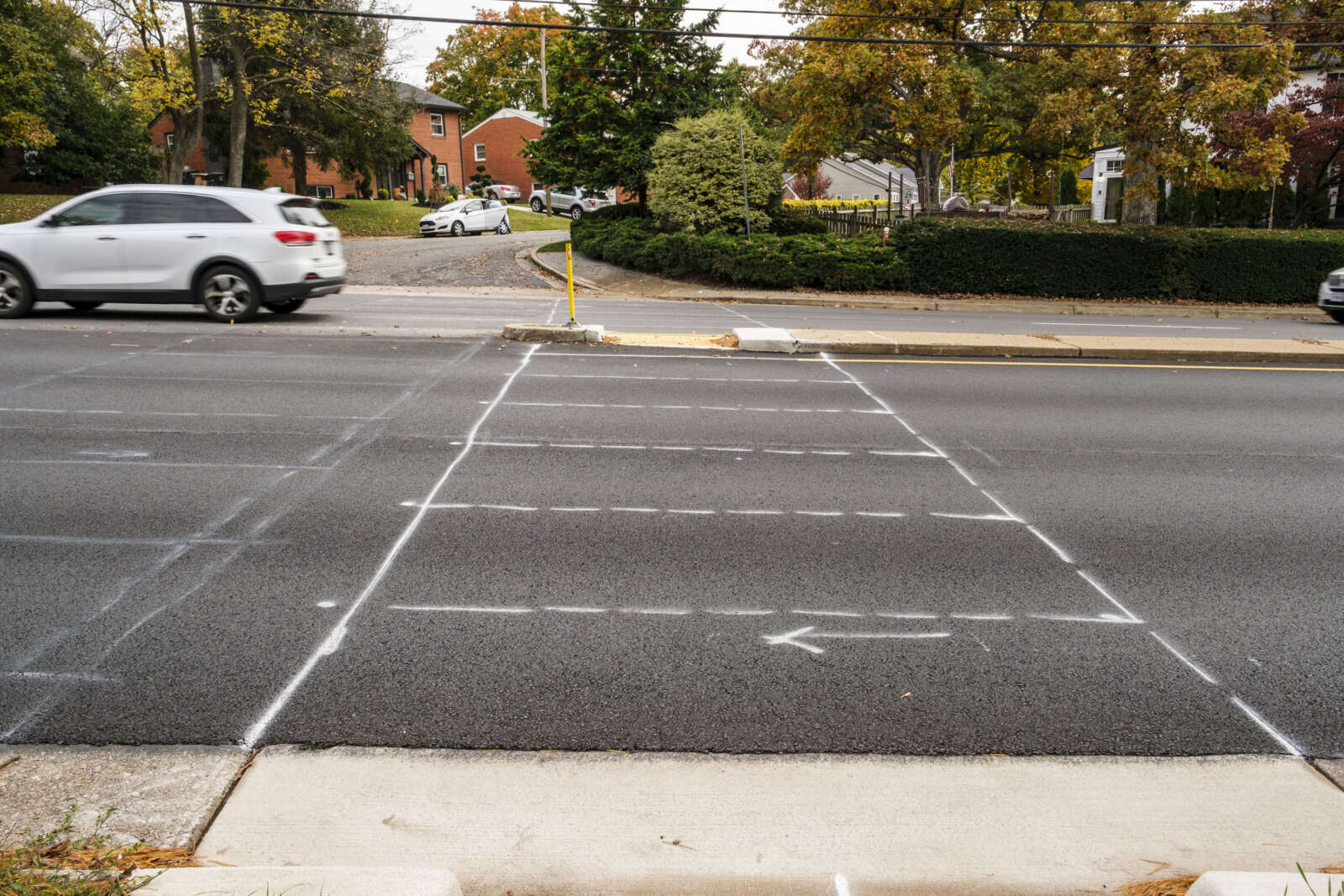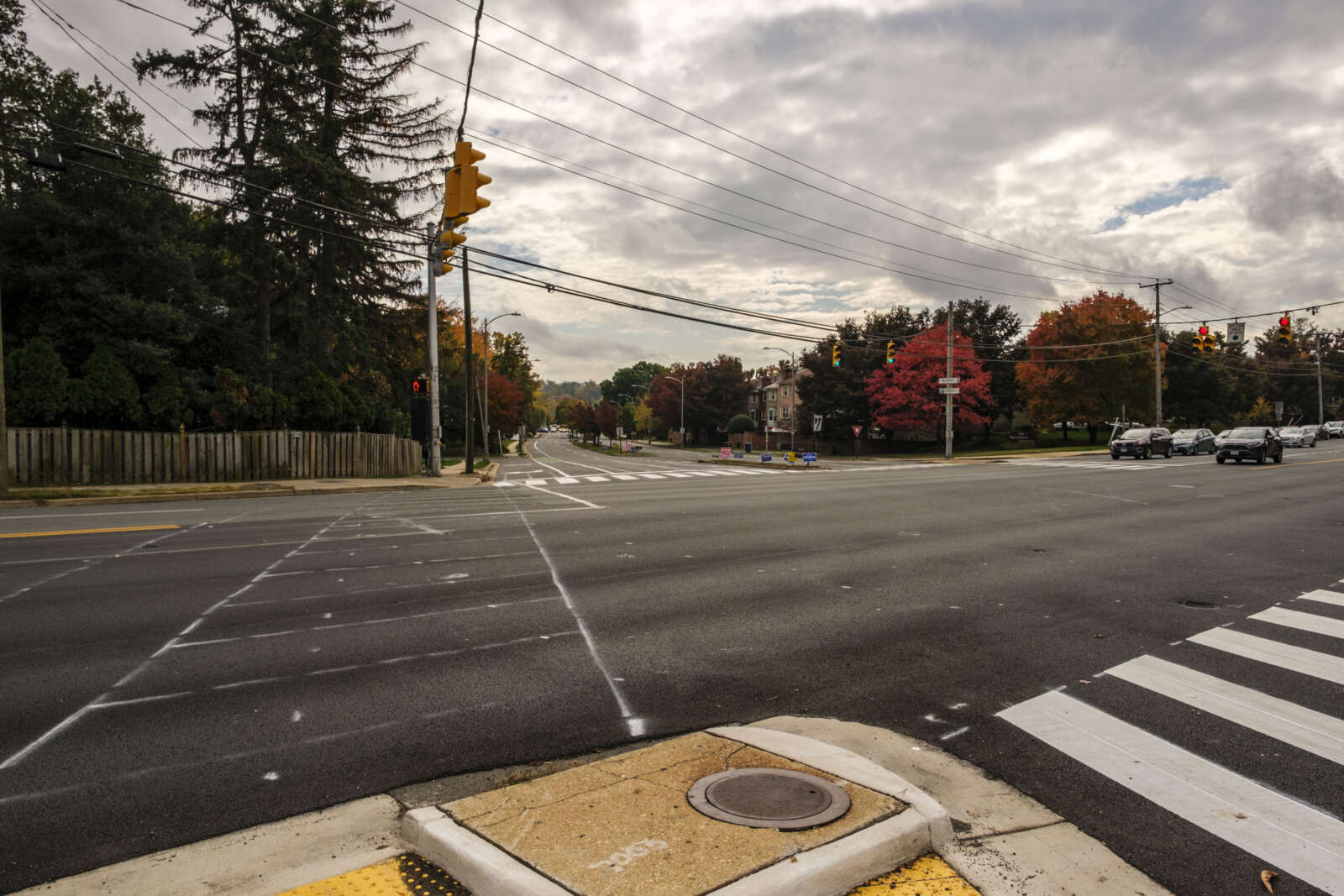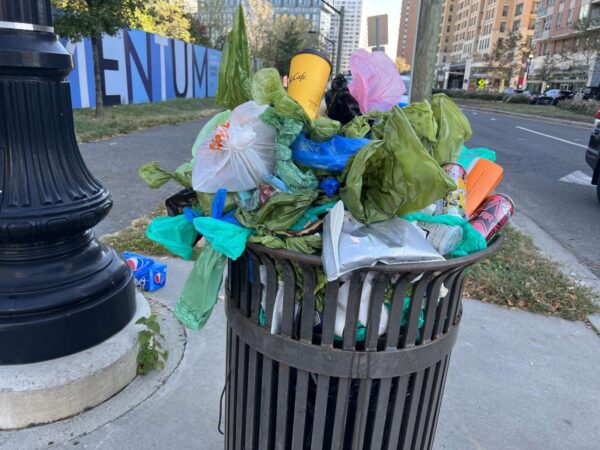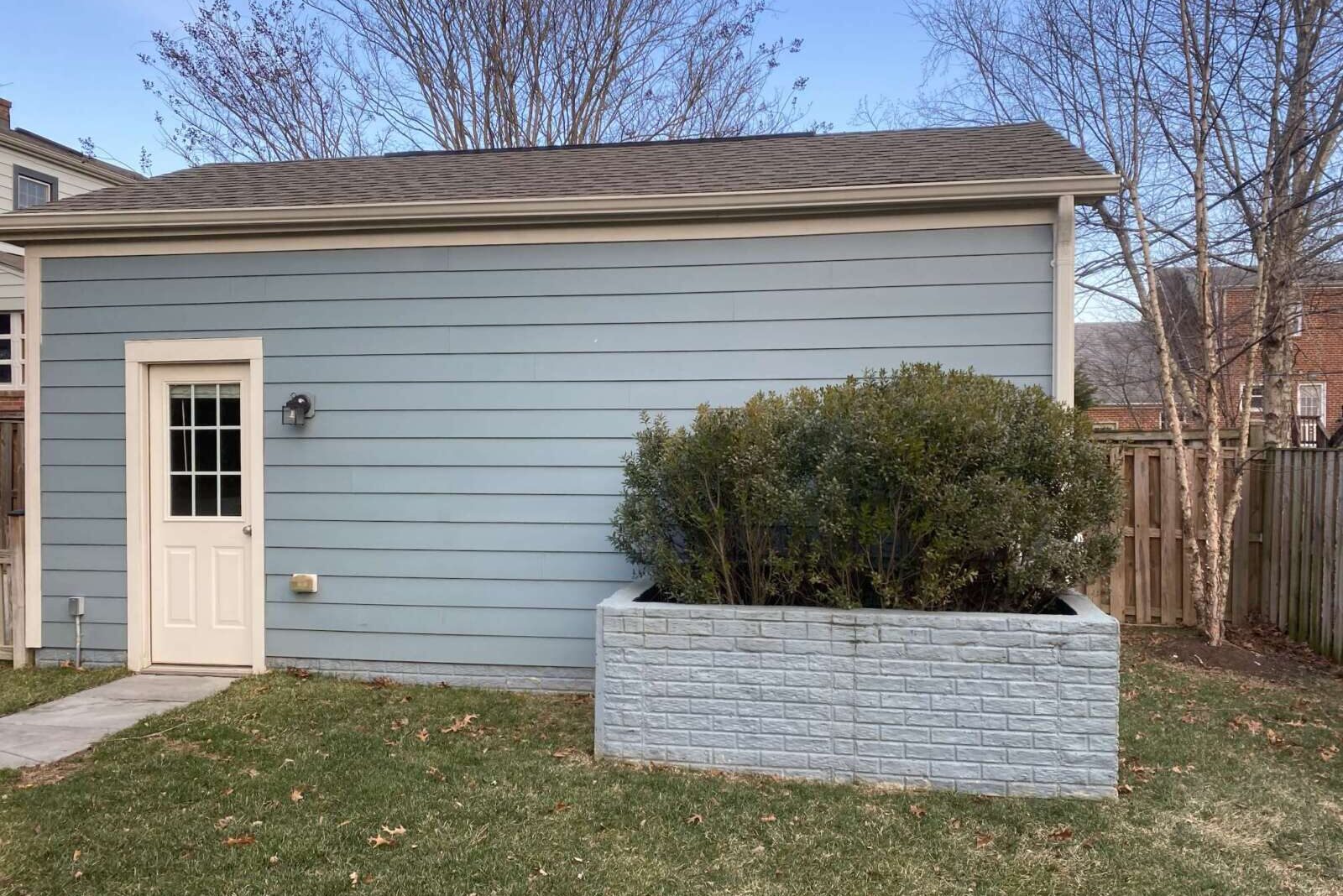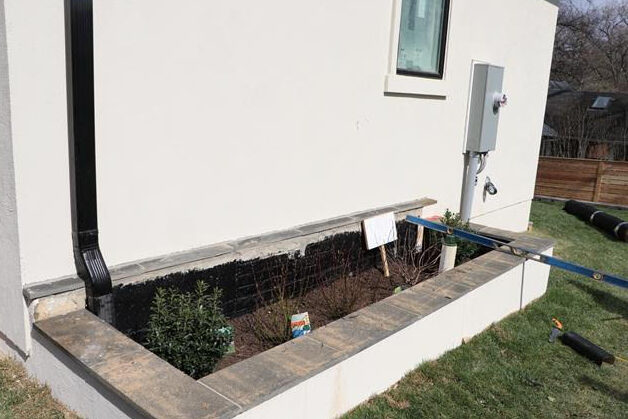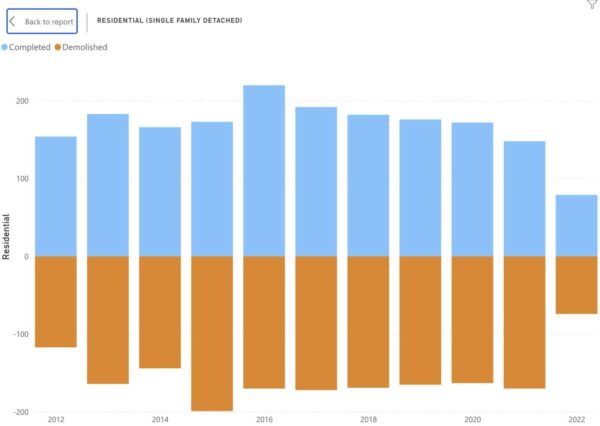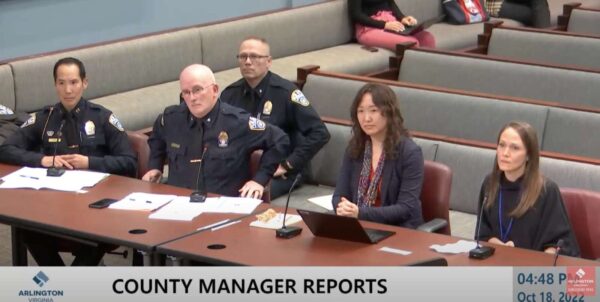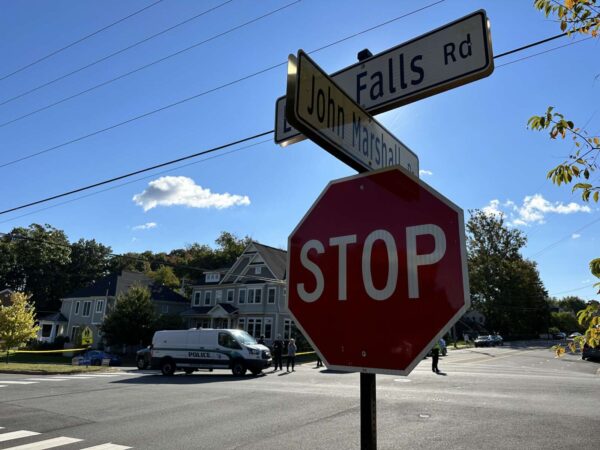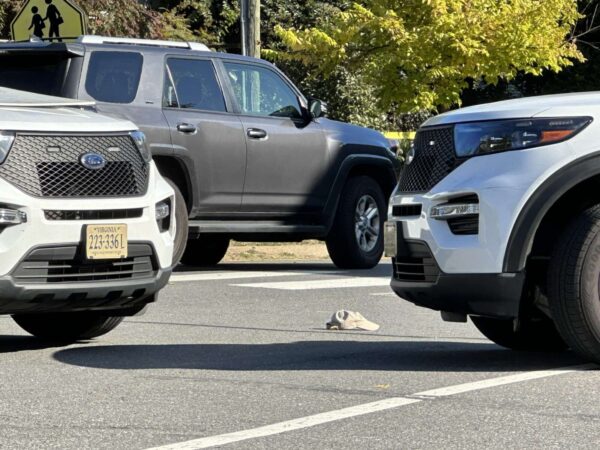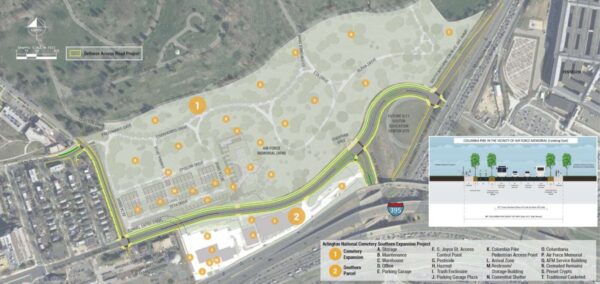
(Updated at 12:40 p.m. on 8/16/23) A portion of Columbia Pike is set to close for more than a year later this month to help make way for Arlington National Cemetery’s expansion.
The half-mile section of Columbia Pike between S. Joyce Street and the Virginia Department of Transportation (VDOT) facility just east of S. Oak Street is expected to be shuttered starting Monday, Jan. 23.
It will remain closed until the summer of 2024.
The closures are part of the Federal Highway Administration’s Arlington National Cemetery Defense Access Roads (DAR) project that’s being done to accommodate the 50-acre southern expansion of Arlington National Cemetery (ANC).
This will add about 80,000 burial sites, allowing the cemetery to continue burials through the 2050s. The expansion will also bring the Air Force Memorial within cemetery grounds as well as provide space for the 9/11 Pentagon Memorial Visitor Education Center, with construction on that currently slated to start next year.
The overall expansion project remains on track to be completed by 2027, an ANC spokesperson confirmed to ARLnow.
Some detour specifics for the Pike closure are expected to be announced in the coming days, though the ANC spokesperson did share the general plan via email.
Traffic will be redirected to travel north on a new segment of S. Nash Street that will be opened between Columbia Pike and Southgate Road and one block east of S. Oak Street. It’s marked as a “new access road” on the map below.
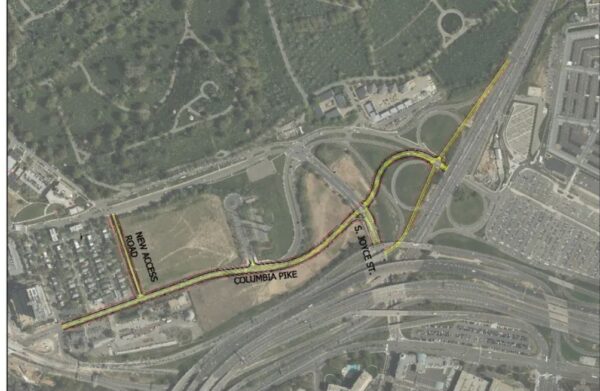
Then, to circumvent the closed portion of the Pike, traffic will be sent east on Southgate Road to the existing S. Joyce Street/Columbia Pike intersection, which will remain open.
For pedestrians and cyclists, there is set to be a “dedicated” sidewalk with a buffer zone and barricades. Those “are currently being constructed in anticipation of the 1/23 closure,” the ANC spokesperson said
At the moment, there is an established pedestrian and bike detour along the north side of Southgate Road as well as a temporary sidewalk to the east of S. Joyce Street that connects with the sidewalk under the I-395 bridge.
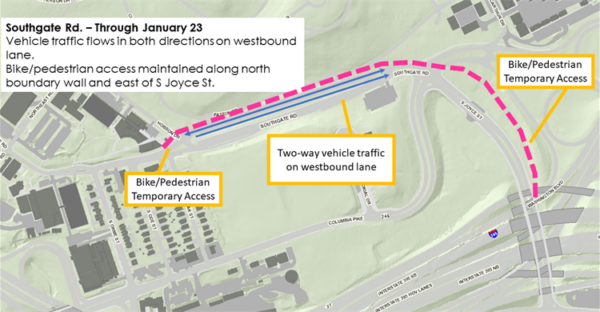
Last week, though, a reader reached out to ARLnow about how a portion of the pedestrian and bike detour has a “large patch of gravel” rendering it not accessible for some.
“While a wheelchair user might be able to make it across that patch, it wouldn’t be easy,” they wrote. The reader said that locals have reached out to the Federal Highway Administration (FHWA) about the gravel but, so far, little has been done.
Local officials told ARLnow that they have since addressed that patch of gravel.


